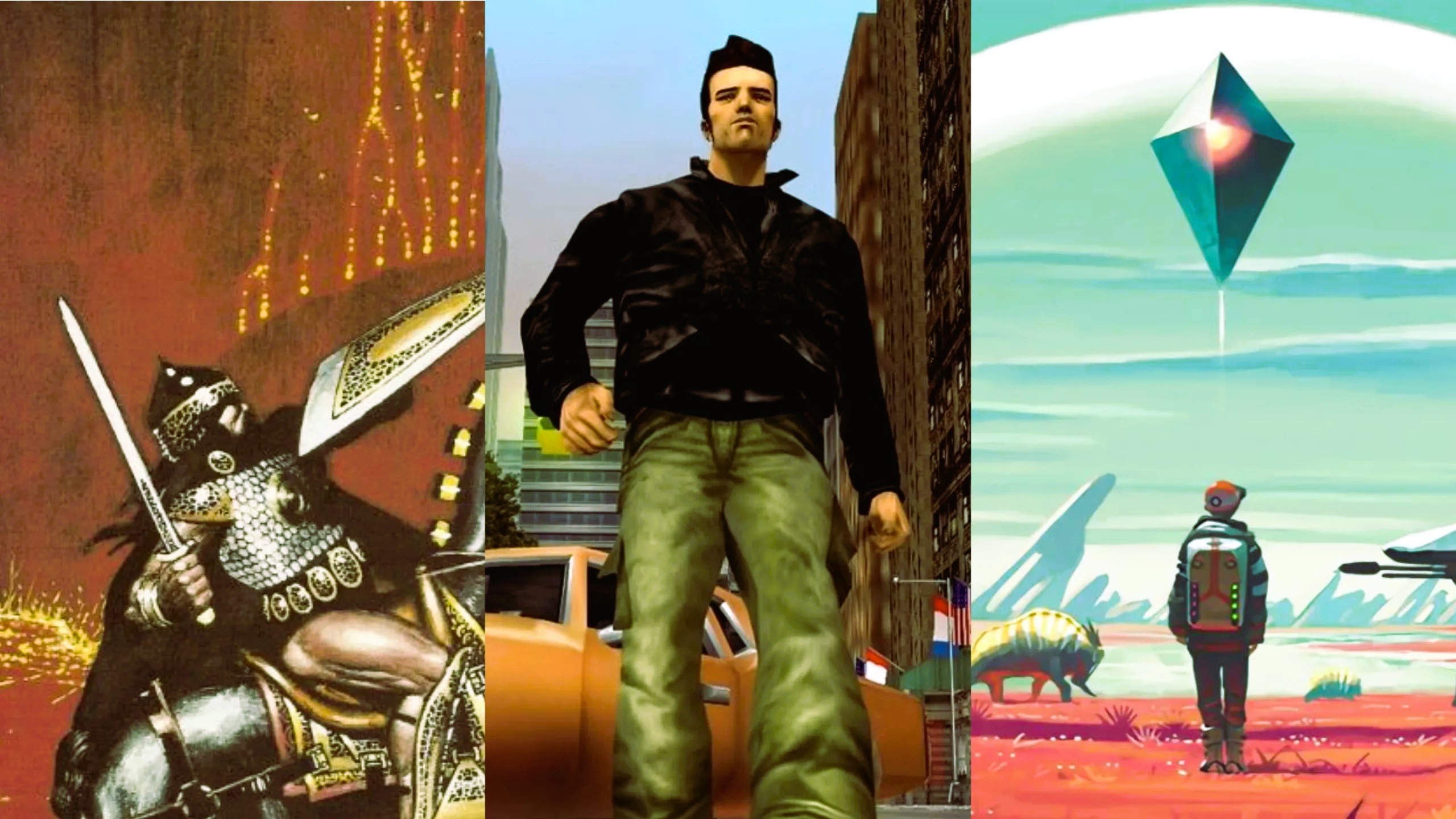Open-world games have come a long way since their inception, offering players vast, immersive worlds where they can explore, interact, and shape their own adventures. The genre has evolved significantly over the years, from humble beginnings to the complex, detailed worlds we experience today. Let’s take a look at how open-world games have progressed, from their early titles to the modern masterpieces that dominate the gaming industry.
The Early Days: The Birth of Open-World Gaming
The roots of open-world gaming can be traced back to the late 1970s and early 1980s. One of the earliest examples of an open-world game was Adventure (1980) for the Atari 2600. While not fully open-world by modern standards, it allowed players to explore a large map and engage with the environment in non-linear ways, which set the stage for future developments.
However, it wasn’t until the release of Zork (1980), a text-based adventure game, that players were given a truly open-ended experience. Zork allowed players to explore a massive underground world with little guidance or constraints. While these early games were primitive by today’s standards, they introduced the core concept of exploration and freedom that would define the open-world genre.
The Golden Age: The Rise of 3D Worlds
The real breakthrough for open-world games came in the late 1990s and early 2000s with the advent of 3D graphics. One of the first titles to truly showcase the potential of an open-world game was The Legend of Zelda: Ocarina of Time (1998) for the Nintendo 64. While not fully open-world in the way we think of today, Ocarina of Time featured vast environments and non-linear progression, allowing players to explore the world in a more freeform manner.
The early 2000s saw a number of groundbreaking open-world titles that pushed the boundaries of what was possible in gaming. Grand Theft Auto III (2001) is often credited as one of the first fully realized 3D open-world games. It introduced players to a sprawling city where they could take on missions, cause chaos, or simply explore at their own pace. The sheer scale of GTA III was revolutionary for its time, offering a living, breathing world with a day-night cycle, traffic, pedestrians, and a vibrant urban environment.
Another milestone in the genre’s evolution was The Elder Scrolls III: Morrowind (2002). This RPG took open-world exploration to the next level with its enormous map, detailed environments, and deep lore. Players could traverse the expansive world of Tamriel, engage in quests, and shape their own story through their actions. Morrowind became a benchmark for future RPGs, proving that a well-crafted open world could provide hundreds of hours of gameplay.
The Modern Era: Immersive Worlds and Dynamic Interactions

As technology advanced, so too did the ambition of open-world games. The 2010s ushered in an era of visually stunning, highly detailed open worlds with sophisticated systems that offered even greater player freedom. One of the standout titles of this period was The Elder Scrolls V: Skyrim (2011). Building upon the foundation laid by Morrowind and Oblivion, Skyrim delivered an incredibly detailed world filled with engaging quests, dynamic weather, and a complex economy. The game became a cultural phenomenon, winning multiple Game of the Year awards and cementing the role of open-world RPGs in the gaming mainstream.
Meanwhile, Grand Theft Auto V (2013) took the open-world formula to new heights with its massive, meticulously crafted city of Los Santos. The game featured an incredible level of detail, from the bustling city streets to the vast countryside. The three-character system and multiple storylines allowed players to experience the world from different perspectives, making it one of the most ambitious open-world games ever made. The game’s online component, GTA Online, also revolutionized the genre by allowing players to interact in a persistent, evolving world with friends and strangers alike. Did you like the article? Read also about PPC for mobile games.
In 2017, The Legend of Zelda: Breath of the Wild redefined the open-world genre by offering players unparalleled freedom. Set in a massive, interconnected world, the game encourages exploration without heavy hand-holding. The physics-based gameplay, dynamic weather, and various challenges scattered throughout the world made for a truly immersive experience. Breath of the Wild received widespread acclaim for its open-ended design, influencing future games in the genre.
The Future of Open-World Games
Today, open-world games are more expansive and immersive than ever before. Titles like Red Dead Redemption 2 (2018) and Cyberpunk 2077 (2020) have pushed the boundaries of what’s possible with modern technology, offering rich narratives, dynamic ecosystems, and interactive environments that respond to player choices. These games boast realistic graphics, deep AI systems, and a level of detail that makes their worlds feel alive.
Looking ahead, the future of open-world games seems limitless. With the development of next-gen consoles, advancements in cloud gaming, and the continued evolution of AI, we can expect even more complex, immersive worlds to explore. Virtual reality (VR) and augmented reality (AR) are also on the horizon, promising to bring open-world experiences into entirely new realms of interaction.
The evolution of open-world games has been nothing short of remarkable. From humble beginnings in the 1980s to the visually stunning, interactive masterpieces of today, the genre has continued to innovate and captivate players worldwide. As technology continues to advance, the open-world genre will undoubtedly continue to evolve, offering gamers even more expansive and immersive experiences.
For more information about the evolution of gaming and open-world titles, visit Wikipedia’s article on Game Standardization.






